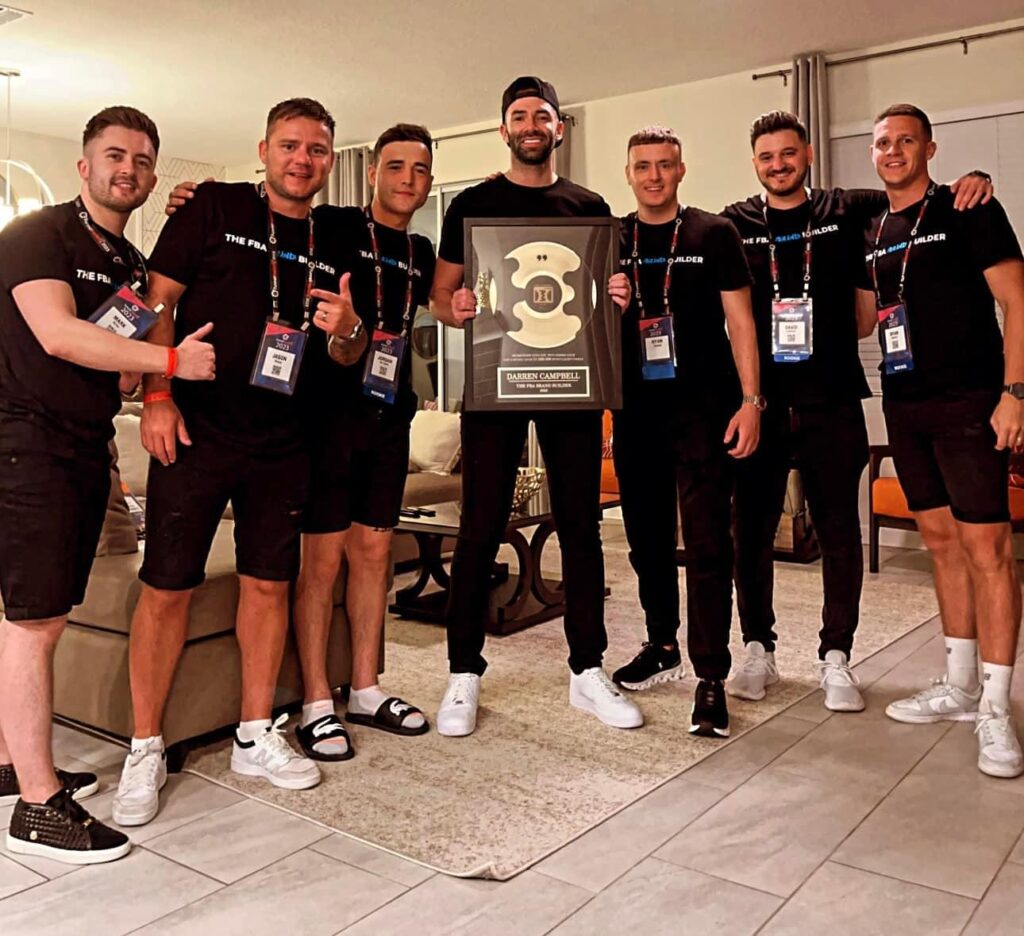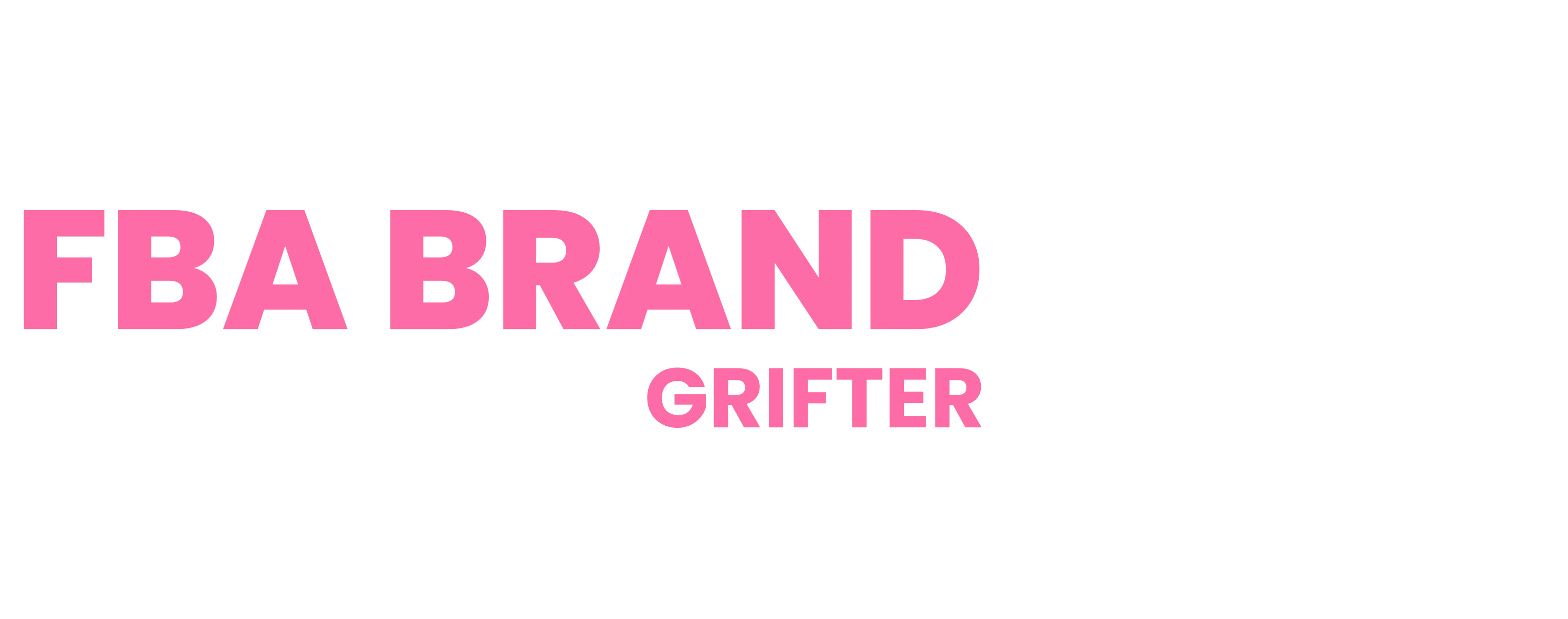If you’re considering signing up for Darren Campbell’s FBA Brand Builder program, it’s worth taking a close look at what’s being offered and what past clients say they experienced. For many, this £6,500 program was pitched as a “guaranteed blueprint” for Amazon success, and the initial calls with Darren’s team reportedly included advice on securing loans if needed to afford the program. Yet, former clients have raised concerns about the unexpected costs at each stage and the general lack of transparency about what the program actually includes.

While we can’t verify the current state of the training content, insights from former clients offer a glimpse into the program's structure. Darren’s website, unlike most training providers, doesn’t offer a brochure or clear breakdown of each stage, leaving potential clients with little idea of what they’re paying for. And with a strict no-refund policy in place, it’s understandable why some might feel misled.
A General Overview of the Program Stages
Based on what former clients have shared, here’s a broad look at the structure and potential costs of Darren’s FBA Brand Builder program.
- Mindset and Motivation
In the beginning, the program focuses on building a “millionaire mindset” and embracing a “rich” way of thinking. Clients are encouraged to put past setbacks behind them, fully commit to the journey, and prepare mentally for what’s to come. This stage appears to be more about motivation and adjusting to a success-driven mindset rather than concrete business skills. - Setting Up Business Foundations
The next step is all about establishing the basics: setting up a limited company, creating a business account with platforms like Revolut or Wise, and getting organized on platforms like Google Drive. Clients report being guided to use specific accountants and third-party service providers, which come with extra fees that aren’t included in the original program cost. Some clients were also encouraged to use business accounts that include referral links, potentially benefiting Darren’s team without client awareness. - Product Research
The product research stage involves finding a profitable item to sell on Amazon. This step includes using software tools and Amazon calculators to shortlist potential products, then validating them through calls with Darren’s team. Clients are directed to tools like “Empire Builder” and other software for research, but these tools often come with additional subscriptions or fees that clients must cover. - Sourcing and Supplier Connections
In this stage, clients work on connecting with suppliers—primarily from Alibaba and other similar sourcing sites. The training covers outreach templates and advice on negotiating terms, plus compliance checks to make sure products meet Amazon’s standards. However, sourcing also involves sample costs, shipping deposits, and the complexity of dealing with international suppliers, which can all add up quickly. - Brand Building
Branding is positioned as an essential part of the journey, but it mostly consists of basic steps like creating a logo, choosing packaging, and developing a brand name. Clients are often guided toward third-party services for design work and are left with the responsibility of putting their brand together. Many have found these tasks require additional payments, pushing costs far beyond the initial investment. - Order Placement and Shipping Logistics
Once clients settle on a supplier, they dive into the logistics of placing orders and organizing shipping. Here, clients may need to work with freight forwarders, arrange inspections, and ensure their products meet Amazon’s shipping requirements. Each of these tasks introduces new costs, and clients are typically left to cover deposits, inspections, and additional fees on their own. - Creating an Amazon Listing
Next comes building an Amazon product listing, where clients upload images, write product descriptions, and set up Amazon PPC (pay-per-click) advertising. There’s often mention of using paid tools to enhance the listing, along with advice on gathering initial reviews from friends and family to boost credibility. All of this, of course, can increase out-of-pocket expenses. - Launch and Growth Strategy
The final stage focuses on launching the product and building momentum, which includes Amazon’s Vine program for initial reviews, ad management, and tracking sales performance. To be recognized as a “success story” within the program, clients report needing to achieve a high monthly sales benchmark—a goal that can be daunting given the program’s overall costs. Darren’s team offers support during this stage, but achieving substantial sales growth can be difficult without a significant marketing budget.
The Real Cost of This “Guaranteed Blueprint”
What stands out from client experiences is just how quickly the hidden costs start piling up. While the program fee is £6,500, the additional expenses required to progress through each stage often catch clients off guard. Let’s look at some specific examples:
- Account Setup and Legal Fees: Clients are advised to set up business accounts on platforms like Revolut and Wise, often through referral links that aren’t disclosed to benefit Darren’s team. Setting up a limited company and using recommended accountants also add to the expenses.
- Product Sourcing Costs: Ordering product samples, paying deposits, and covering compliance checks with suppliers are all part of the process. These can amount to significant upfront costs before clients even get their products listed.
- Marketing and Review Costs: Services like Amazon’s Vine program for gathering reviews and paid PPC ads are considered essential for growth. Additionally, clients are often encouraged to ask friends and family to buy and review their products on Amazon, a tactic that may not be sustainable.

Financial Pressure and the Push to Take Out Loans
In the initial sales process, some clients report being encouraged to “go all in” by making financial sacrifices, including taking out loans to pay for the program. The messaging from Darren’s team often stresses the importance of commitment and a “do whatever it takes” mentality, suggesting that the cost will ultimately pay off. However, with additional costs adding up at each stage, many clients find themselves financially stretched and struggling to achieve the promised results.
Lack of Transparency and Refund Policy Concerns
One thing that stands out with Darren’s program is the lack of upfront transparency. Reputable training providers typically offer detailed course breakdowns, brochures, or sample lessons to help potential clients make informed decisions. Darren’s website, however, lacks any specific information about what’s included at each stage, and with no refund policy, clients are left with little recourse if the program doesn’t meet their expectations.
Thoughts for Potential Clients
If you’re thinking about joining Darren Campbell’s FBA Brand Builder program, take a close look at what you’re getting into. The program may be marketed as a “sellable brand” blueprint, but building an Amazon business around reselling and rebranding products sourced from Alibaba or similar suppliers might not result in the high-value, sellable brand you’re envisioning. Branding experts generally agree that strong brands require originality, customer loyalty, and visibility—not just a few private-label products on Amazon.
Before committing, consider reaching out to other e-commerce experts or branding consultants to get a second opinion. After all, if building and selling brands through this method were so easy, Darren would likely be selling his own brand rather than pushing his training program. That alone should make you question whether this “blueprint” is as effective as it’s claimed to be. And if you’re already enrolled or need advice, feel free to contact us at [email protected].

